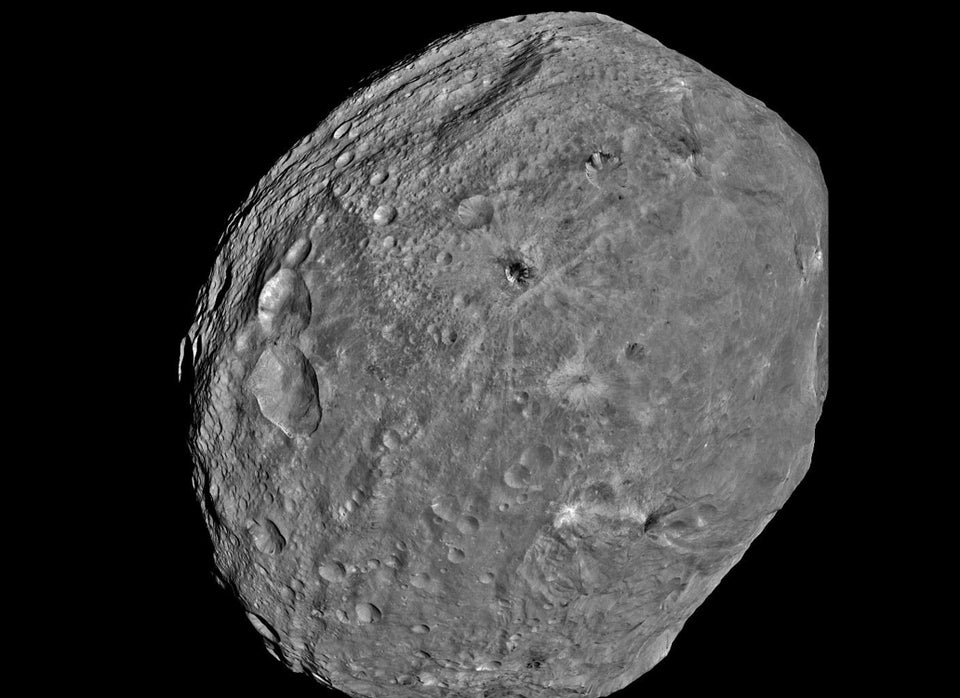2005 YU55, an asteroid larger than an aircraft carrier, will whiz past Earth on Tuesday, coming so close to the home planet that it will actually travel inside the moon's orbit.
Astronomically speaking, the asteroid will narrowly miss Earth, but NASA tells HuffPost we have nothing to worry about. Rather, it is an opportunity for astronomers to do research into the asteroid's composition.
UPDATE 11/8 7pm: According to the Associated Press, the asteroid has "zipped by Earth."
"There is no chance that this object will collide with the Earth or moon," Don Yeomans, the manager of NASA's Near Earth Object Program office, told Reuters last week.
According to NASA, the space rock is about 1,300 feet across and takes about 18 hours to make a full rotation. At its closest point to Earth, which will occur at 6:28 p.m. EST, the asteroid will be 202,000 miles away, or roughly .85 the distance of the moon to Earth.
Even though it's relatively close, Asteroid 2005 YU55 can't be seen with the naked eye. But if the stars align (yes, we had to go there), some amateur astronomers with the right equipment might be able to catch a glimpse of the asteroid as it hurtles by at a reported 30,000 miles per hour.
"The best time to observe it would be in the early evening on November 8th from the east coast of the US," Scott Fisher, program director of the National Science Foundation's Division of Astronomical Sciences told Space.com. "However! It is going to be VERY faint, even at its closest approach. You will need a decent sized telescope to be able to actually see the object as it flies by."
According to Kelly Beatty at Sky & Telescope, you'll need a telescope with at least a 6-inch aperture to see the asteroid. It's a nearly full moon tonight, so just like some of the meteor showers earlier this year that have been washed out, the visibility of the asteroid could also be affected by the moon's glare.
Sky & Telescope, which has a great map of the asteroid's path, reports that the space rock will take ten hours to move east across the sky, from Aquila to Pegasus.
Don't fear if you lack the equipment or know-how to track the space rock. For a roughly $12 donation, you can catch a live webcast of the event from Italy's Bellatrix Astronomical Observatory.
Countdown to asteroid passing closest to Earth:
Animation of asteroid's path as it passes by Earth: Credit: NASA/JPL-Caltech
Check out some asteroid photos in the slideshow below:
